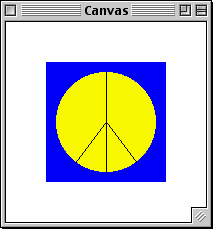I use the words "function", "operator", and "program" almost interchangeably. All three words mean "something that takes in some information, does some computation, and produces some information as a result".
The word "operator" tends to be used for built-in arithmetic functions like addition, subtraction, multiplication, division, square root, and comparison. The word "program" tends to be used for functions you or I have defined. The word "function" applies equally to both. Don't worry too much about this distinction.
For example, consider the familiar arithmetic operators
"+", "-", etc. from grade school:
in the algebraic expression 3 + 4, the
operator "+" operates on the two pieces of information "3"
and "4" and produces the result "7".
+, -, *, /all take two or more numbers and return a numbersqrttakes one number and returns a numberremainderandmodulo(two names for the same operator) both take two integers and return an integer: they divide the first operand by the second, returning not the quotient but the remainder.
Examples:
(sqrt (+ (* 3 (remainder 5 3)) (* 4 4)))(sqrt 3 4)
Illegal because thesqrtfunction only accepts one parameter.
pihas the value 3.14159....ehas the value 2.71828182....
define keywordThe define keyword is used in two common
ways: defining variables
and defining
functions.
trueandfalseare the two built-in boolean values.<, >, =, <=, >=all take two or more numbers and return a booleaneq?takes two objects (numbers, symbols, booleans, or anything else) and returns a booleanand, oreach takes two or more booleans and returns a booleannottakes a boolean and returns a booleanzero?, positive?, negative?all take a number and return a boolean.
(zero? x)is just another way of saying(= x 0).
(positive? x)is just another way of saying(> x 0).
(negative? x)is just another way of saying(< x 0).
Examples:
(or (<= price 10.00) (eq? my-symbol 'bluebird))- Legal. This determines whether
priceis less than or equal to 10.00; if so, it returnstrue. If not, it then tests whethermy-symbolis the symbol'bluebird; if so, it returnstrue, otherwisefalse. (or 3 4)- Illegal because
orworks on booleans, not numbers (< true false)- Illegal because < works on numbers, not booleans
(+ 3 (< 4 5))- The first step of simplification turns this into
(+ 3 true), because the value of(< 4 5)istrue. The second step fails because+only works on numbers, not on a number and a boolean.
Scheme contains several conditional constructs, but the
only one we need in this course is cond.
The
define-struct keyword allows you to add new
aggregate data types to the language.
Note: to use any of these, you need to
load draw-lib.ss or one of the other libraries
that uses it. These libraries include a "define-struct" for
the "posn" structure, so if you're using them,
don't write your own definition of "posn".
starttakes two numbers (width and height), creates a canvas width x height pixels, and returnstrue. Do this before using any of the following graphics calls.draw-solid-linetakes twoposns and (optionally) a color ('white, 'black, 'red, 'yellow, 'green, or 'blue); draws a line between the twoposns in the specified color, and returnstrue.draw-solid-recttakes aposnand two numbers (width and height) and (optionally) a color; draws a solid rectangle whose upper left corner is the specified position and whose width and height are as specified, and returnstrue.draw-solid-disktakes aposnand a number and (optionally) a color; draws a solid disk whose center is the specified position and whose radius is the specified number, and returnstrue.draw-circletakes aposnand a number and (optionally) a color; draws the outline of a circle whose center is the specified position and whose radius is the specified number, and returnstrue.wait-for-mouse-clicktakes no parameters at all. It waits for the user to click the mouse button somewhere inside the graphics window, then returns the coordinates as aposn.
Examples:

- From the Language menu, choose "Set Teachpack To..." and choose the file draw.ss.
(start 200 200)
opens a graphics window 200 pixels square.(draw-solid-rect (make-posn 40 40) 120 120 BLUE)
draws a blue square with upper-left corner (40,40), 120 pixels on a side.(define center (make-posn 100 100))
doesn't draw anything, but defines a point for future use.(draw-solid-disk center 50 YELLOW)
draws a yellow disk centered at the point (overwriting part of the previous rectangle).(draw-solid-line (make-posn 100 50) (make-posn 100 150))
draws a black line down through the middle of the disk.(draw-solid-line center (make-posn 130 140))
draws a black radius down and to the right.(draw-solid-line center (make-posn 70 140))
draws another black radius down and to the left.
emptyis a variable, not a function; its value is the empty list.constakes an object and a list, and returns a new list with the specified object as its first element, and the specified list as the rest. In Beginner mode, it signals an error if the second parameter is not a list.firsttakes a non-empty list and returns the first element. It signals an error message if it is given an empty list or anything other than a list.resttakes a non-empty list and returns a list of everything but the first element. It signals an error message if it is given an empty list or anything other than a list.empty?takes an object and returns a boolean indicating whether it is the empty list.cons?takes an object and returns a boolean indicating whether it is a non-empty list.
Examples:
(cons 'bluebird empty)- returns exactly the same thing
(define bird-list (cons 'bluebird (cons 'mallard (cons 'crow empty)))- returns nothing, but defines
bird-listto be a list of three symbols. bird-list- returns
(cons 'bluebird (cons 'mallard (cons 'crow empty))) (first bird-list)- returns
'bluebird (rest bird-list)- returns
(cons 'mallard (cons 'crow empty)) (first (rest bird-list))- returns
'mallard (empty? bird-list)- returns
false (cons? bird-list)- returns
true (empty? (rest (rest (rest bird-list))))- returns
true